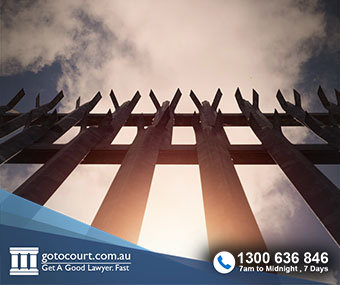Debt Recovery in the ACT
‘Debt recovery’ refers to the processes used to recover money owed by one party to another party under a legally enforceable agreement. There are different processes for recovering a debt depending on the amount of money owed. This page deals with debt recovery in the ACT.
Jurisdiction
In the ACT, the ACT Civil and Administrative Tribunal (ACAT) can deal with civil claims including debt recovery where the amount in dispute is up to $25,000.
The Magistrates Court deals with debt recovery matters involving between $25, 000 and $250,000.
The Supreme Court has jurisdiction to deal with debt recovery matters where the debt is over $250,000. The Supreme Court can also hear matters where the amount is dispute is less than $250,000; however, these matters are usually dealt with elsewhere.
Letter of demand
When a party believes it is owed money by another party, it should first write to the other party setting out the claim and asking for payment within a timeframe.
The letter should advise that if the debt is not paid within the timeframe, legal proceedings will be commenced. This is known as a letter of demand. A letter of demand gives the other party a chance to pay what is owed and resolve the matter without the need for litigation.
A letter of demand should include all the details of the amount owed and what the money is owed for. It should attach all supporting documentation such as invoices and any previous correspondence between the parties.
Commencing proceedings
If payment is not received in response to a letter of demand, the claimant may file a claim with the appropriate court or tribunal. The letter of demand and supporting documents should be attached to the claim.
Debt recovery claims must generally be filed within six years of the date on which the debt arose. However, there are some exceptions to this rule set out in the Limitation Act 1985.
ACAT and debt recovery matters
For proceedings commenced in the ACT Civil and Administrative Tribunal, the person making the claim is called the Applicant (this will be the creditor) and the person that the claim is against is called the Respondent (the debtor).
Parties to an ACAT claim may represent themselves or be represented by a lawyer. In most cases no legal costs are awarded by ACAT.
When a claim is filed, a copy is sent to the Respondent along with a Response form which must be completed and returned within 21 days. If the respondent does not file a Response, the applicant can request that ACAT make a default judgment. If the respondent does file a Response, the parties will be called in for an informal conference or mediation to try to settle the claim.
If the matter does not settle at the informal conference or mediation, it will be listed for a hearing. The hearing is designed to be as simple, quick, and as informal as is possible.
Once an ACAT judgment is delivered, it must be registered in the Magistrates Court for enforcement. The rules for enforcement are then the same as for court judgments.
Debt recovery in the courts
Debt recovery matters in the ACT courts start with the creditor (plaintiff) filing an Originating Claim and a Statement of Claim and serving both documents on the debtor (defendant). After being served with the documents, the defendant has 28 days to file either a Notice of Intention to Respond or a Defence.
If the defendant files a defence, the parties will then be ordered to attend a pre-trial conference. At this conference, a Registrar will review the facts and try to narrow down the issues in dispute and/or settle the matter. If the matter does not settle, it will be set down for a hearing.
If the defendant does not file a defence, the plaintiff may apply for a default judgment to be issued.
Once there is a judgment, enforcement action can be taken.
Enforcing a judgment
After judgment has been entered by a court or tribunal, the judgment creditor (plaintiff) may take enforcement action against the judgment debtor (defendant). However, before enforcement action can be taken to recover a debt, the creditor must serve the debtor with a copy of the judgment and a notice about enforcement options. No enforcement action can be taken for seven days after this has occurred.
After this seven days has passed, the judgment creditor may apply to the court for an enforcement hearing. At this hearing, the judgment debtor will be required to appear before the court to answer questions regarding his or her financial status, including any sources of income and assets and liabilities. The information obtained at the enforcement hearing may then be used to support an enforcement order such as a seizure and sale order or a redirection order.
A seizure and sale order directs a Sheriff’s Officer to seize goods belonging to the debtor and auction them to recover the money owed to the creditor. A redirection order is an order directing any earnings such as salaries, wages, bank accounts or commissions to be redirected to the creditor as payment of the debt.
Payment by instalments
A debtor may apply to the court registrar to be allowed to pay the judgment debt by instalments. If the Registrar refuses this application, the debtor may appeal this decision to a magistrate who may rehear the application.
A debtor may also make an offer to pay a judgment debt in instalments.
If you require legal advice or representation in any legal matter, please contact Go To Court Lawyers.






